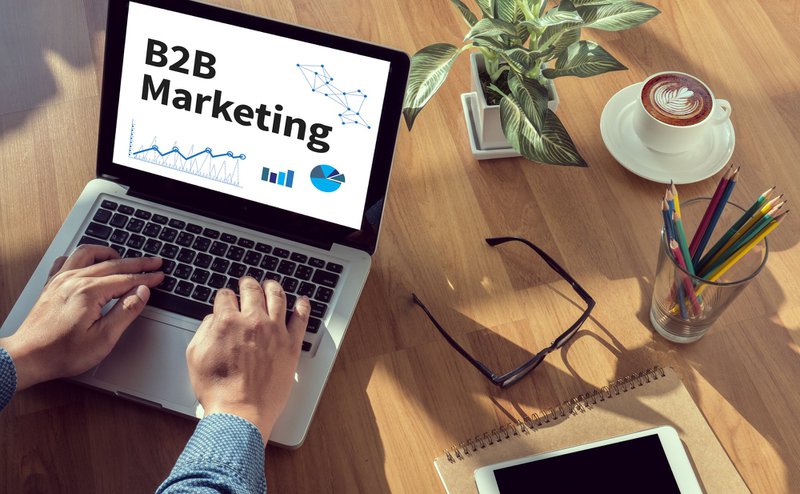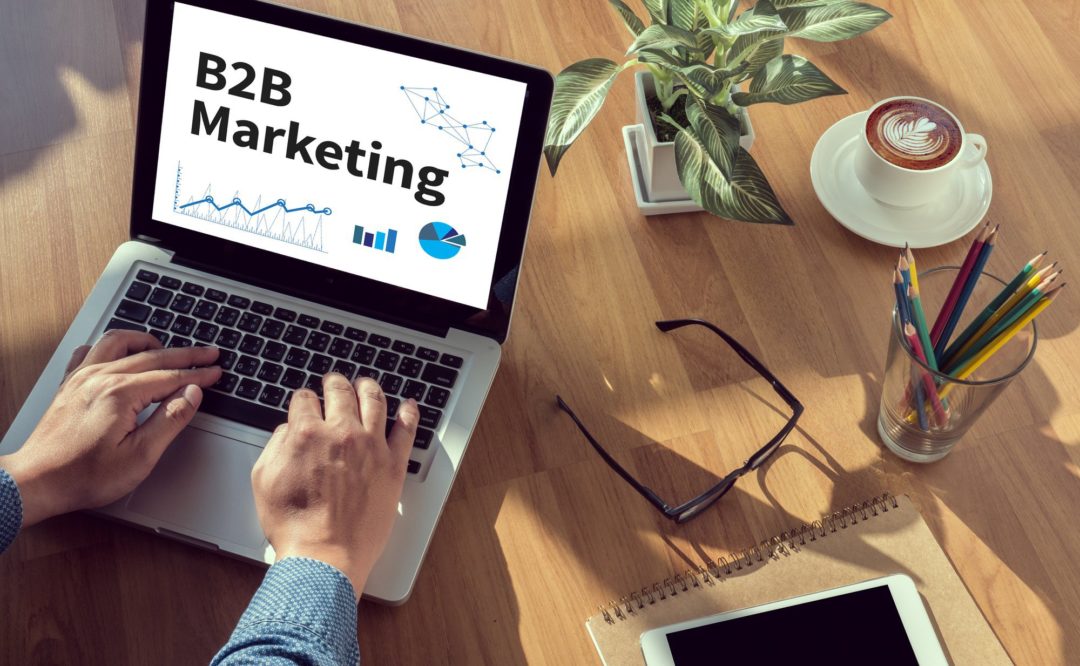
The COVID-19 pandemic spurred customers to conduct online transactions including in the B2B space. As businesses put up the shutters on face-to-face sales channels, B2B eCommerce sales recorded a 9.6% jump from $9.06 trillion in 2019 to $9.92 trillion in 2020.
Surely, the road ahead is replete with opportunities for the B2B marketer, as it is with perils. After all, if your competitors are aggressively fine-tuning their B2B eCommerce fundamentals, then you risk falling behind.
But it doesn't have to be this way.
The key is to understand your customer journey online. Empathizing with your customers’ pain points and experience as they go through your website is a start. Using analytics should also help you engage them intuitively.
Below are seven fundamentals that will help boost your B2B eCommerce sales. They are tailored to the unique dynamics of the B2B buyer journey.
1. Maintain Blazing Fast Loading Times
A mobile page that takes over three seconds to load loses more than half of its visitors, according to a Google study. Users want to find answers fast or complete a transaction online smoothly, but slow-loading websites disrupt this experience.
Hence, Google advises website administrators to include speed in their user-centric performance metrics to help improve user experience. The search giant has made page speed a major ranking signal since 2010 for desktop searches and 2018 for mobile searches.
But what slows down a page load? While there are several factors, the common causes are a JavaScript overload or hosting a huge volume of unoptimized images, issues that typically confront eCommerce websites.
The Product List Page and Product Detail Page of these sites experience huge data and image volume transfers regularly. The issue is exacerbated on mobile devices where storage and power are greatly diminished.
However, there are techniques and technologies that ensure a mobile page loads fast. For instance, at Zobrist, we utilize PWA or Progressive Web App, headless storefront, isomorphic rendering, and deep-linking to help you deliver fast-loading mobile websites. Using a third-party solution like our Mobiecom is a sound route to fast-loading mobile eCommerce, where you lack the technical expertise or time.
Other technical causes of slow-loading websites include excessive HTTP requests, not implementing caching techniques, and cluttered coding.
Sometimes, the issue is external, such as bad hosting and cyberattacks like DoS or denial of service, where hackers overload your website with excessive login attempts or other malicious attempts to disrupt your server connection. In such cases, securing your website from cyberattacks is a must.
2. Ensure a Mobile-Friendly Web Design
Mobile transactions are expected to account for over 54% of all eCommerce sales in 2021. If you haven’t paid much attention to your website’s mobile responsiveness, you may be losing half of your potential sales.
Having a mobile-friendly eCommerce website also contributes to better search ranking. Google factors in mobile page load speed as a key metric to determining websites to display on SERPs (search engine result pages).
Likewise, your social media followers are likely to be on a smartphone when they click on your website; hence, having a mobile-responsive eCommerce site is crucial.
If you’re unsure of your website’s mobile performance, you can try the Google mobile testing tool. But keep in mind this tool gives you a baseline evaluation. A thumbs-up means your mobile website meets the standard requirements. In a crowd of average-performing mobile websites, you want to stand out.
In general, a mobile-friendly web design considers the following:
- It adjusts to screen size and orientation.
- It displays only the most important information based on user queries.
- It is analytics-based, the design is built around insights like the most-visited pages, user queries, and traffic sources.
- It avoids pop-up ads.
- It ditches clutter, especially an image-heavy layout.
- It adjusts text and button size to a mobile screen.
Make sure that your design team has a mobile-first design approach and that it pays close attention to loading speed as a key performance metric, as we in Zobrist do to help companies seeking $100 million and up B2B eCommerce sales achieve their targets.
3. Optimize Your Website's Search Functionality
Many eCommerce websites overlook on-site search to their detriment. Did you know that 11% of on-site searches lead to over 50% of sales? And yet, only 4 out of 10 websites use filters in search, and that 7 out of 10 websites turn up search results only for exact keyword matches.
Furthermore, in a BigCommerce study, 71% of B2B buyers said being able to navigate a website smoothly is the most important selling feature for them. In all these instances, prospects are being lost because they can’t find the information buried in your website.
One of the simplest ways to improve your website’s search functionality is to help visitors filter products by type, name, or SKU number. You can also allow them to search by solution instead of by product. Zeroing on their pain points helps customers put your product into context and, hopefully, will create brand stickiness.
You can also employ predictive search or group related products, suggesting items or content that match user intent. Likewise, smart forms help visitors narrow down their search quickly. These forms use a series of dynamic fields that adjust to rules you set, such as user location, demographics, industry, and problem type. Able to gather intuitive data, a smart form can point users to the best-matching search results.
4. Leverage Analytics to Better Understand Your Customers
Data is king in B2B eCommerce sales. The good news is, you have plenty of analytics software solutions in the market today catering to both small and large enterprises. But if you’re treating analytics as a freemium or side item to your eCommerce business, start investing in more sophisticated features.
With advanced analytics, you can get a clear picture of your target customers, their preferences, wants, pain points, influences, and so much more. You can group audience segments and create buyer personas around them.
When you understand your buyers, you have a better chance of improving conversion rates and arresting abandonment rates.
Furthermore, the more sophisticated analytics churns out deep insights that help you make smarter, data-driven decisions. You can perform cost-benefit analysis with accuracy and measure ROI with confidence. Imagine knowing each of your product’s SKU productivity, including its cost of goods sold, order fees, overhead cost, shipping rates, and fulfillment fees. These insights allow you to identify the best-sellers and product laggards.
Whatever your analytics platform, ensure that a system of attribution is in place to determine key metrics such as channel traffic, PPC conversions, or content page views. Attributions are a set of rules that allow you to credit clicks to the right touchpoints; for example, tracking the source of orders to a landing page or tracing website traffic to a PPC ad.
Setting up analytics involves expertise and experience. Zobrist can help with its integrated analytics that goes through an A/B testing process for optimal performance. Building an infrastructure that supports a top analytics platform, such as Google Analytics, Adobe Analytics, and Coremetrics, is within your reach.

5. Streamline Your Order Management
Getting customers to place an order is a joyful experience. But that can quickly turn nightmarish when confronting an army of angry customers when your order management is in disarray.
It’s time to streamline this backend process when orders start falling through the cracks because you have difficulty capturing them from multiple channels. Or, you have had stockouts (and overstocks) more often than usual. A complicated checkout process and disparate data also add to messing up orders, costing you customers and, ultimately, revenue.
You can prevent these scenarios by streamlining your order management. You should adopt an omnichannel process that lets you view all orders in one location wherever they are placed: your Facebook page, web store, marketplace, over the phone, brick-and-mortar POS, etc.
Similarly, you must have a system that centralizes data like customer information, conversations, and transactions. This setup helps put all your staff—sales, accounting, management, support—on the same page when dealing with a particular customer or order.
You should also choose the 3PL, fulfillment center, or dropshipper that can scale to your growing operations.
The secret to streamlined order management is having a clear process, leveraging automation and technology, and working with reliable partners to boost your B2B eCommerce sales.
6. Personalize the Buying Experience
Personalization also applies to B2B sales. One study found out that 79% of organizations that have a documented personalization process exceeded their sales targets.
But personalization is a multi-faceted approach in B2B since a buyer typically involves more than one person. Rather, you’ll have to understand who constitutes a client’s decision-making unit or DMU, key people from different teams that your client involves in the buyer decision process.
That means you need to understand the various buyer personas in one DMU. They may include C-level executives, managers with widely disparate fields like marketing, I.T., and finance, and even rank-and-file users. You have to be clear about the value proposition to each of these personas.
One way to personalize the B2B buying experience is by customizing catalogs based on the persona’s pain point. A CEO, for instance, would zero in on the product’s ROI, while a manager may focus on reporting and dashboards and a sales rep on user experience. Conversing in the persona’s jargon may also draw more engagement, but use this technique in moderation to avoid convoluted messaging.
You should also have flexible access permission levels to the order process for the different members of your client's decision-making unit. Some companies may want to hide sensitive data like financials and transaction details from some of their DMU members.
Other personalization techniques include offering pricing options based on the buyer’s need, using first-party cookies for retargeting, and triggering products or content by geo-location, industry, business size, etc.
To help you personalize the shopping experience, you’ll need tools to integrate into your eCommerce system. These include mailers, form builders, analytics, CRM, live chat, predictive search tools, and customer experience solutions. Having an I.T. team surely comes in handy to build this tech stack for you, but getting a partner like Zobrist is a cost-effective option.
7. Provide Self-Service Discovery
Your eCommerce website should lend to buyers the ease of self-service discovery. That’s because customers value speed and control. They appreciate finding the answers or knowing the next step without having to ask for help, a cumbersome, alienating process.
One study reported that 73% of customers prefer searching online for answers over the phone (13%), email (9%), and live chat (5%). All the better if they can find the answer right inside your website.
Some of the self-service best practices include:
- providing clear pricing and how plans are tiered
- requiring a few fields and steps to fill out a form
- having a no-commitment offer for a free trial or demo sign-ups
- placing FAQs on strategic pages
- having a knowledge base with smart search filtering
- displaying clear contact details or a live chat on all pages
Likewise, if you’re still treating your eCommerce website as a virtual catalog with contact details, it’s time to level it up to a fully-fledged web store. That means, similar to B2C eCommerce, you must integrate a “My Account” functionality on your website that allows B2B buyers to walk their way throughout the entire purchase process.
B2B buyers should be able to save/share a wish list with their boss or colleagues, request quotations, and customize product bundles on your eCommerce website. They should be able to place orders, pay and print invoices, and view their transaction history, too.
Boosting Your B2B eCommerce Sales Is Achievable
The tips above should point your eCommerce business to a profitable path. Surely, there’ll be more ways to improve your website’s performance as technologies surge forward, customer behavior evolves, and new market trends emerge. But by sticking to the fundamentals above, you ensure B2B eCommerce sales are on stable ground.
Make it your goal to have a fast, mobile-responsive eCommerce website, able to deliver a personalized buying experience and one that leverages self-service discovery, an intuitive search function, deep analytics, and streamlined order management.
Our B2B eCommerce development and consulting solutions can help.




